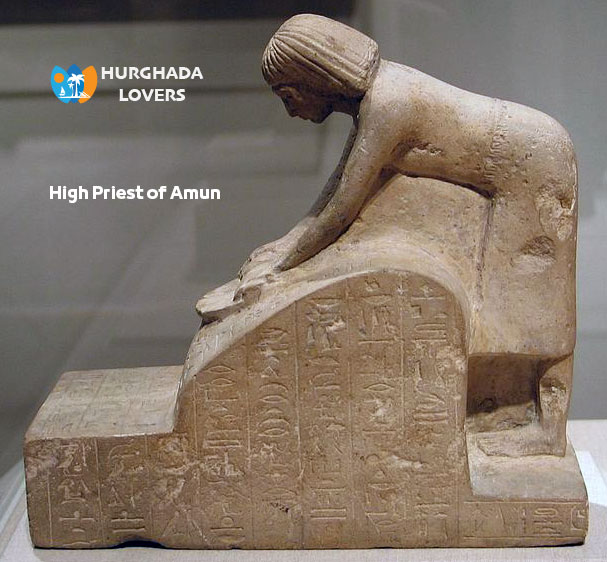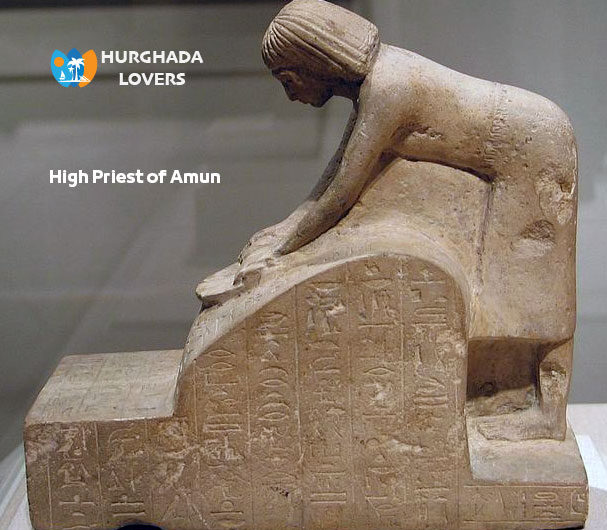High Priest of Amun in Ancient Egypt Civilization | Facts & History of the First Prophet of Amun in Pharaonic Mortuary Temples and more about Ancient Egypt History.
Facts and history about the role and functions of the high priest of the God Amun in the Egyptian Temples, the secrets of the high priest of the god Amun among the pharaohs, and more.
Priest of Amun, who represents the highest rank in the priesthood of various Egyptian deities, specifically the worship of Amun, as that rank appeared among the priests of the Egyptian god Amun at the beginning of the rule of the Eighteenth Dynasty of Egypt from The New Kingdom, and she is the high priest of Amun.
High Priest of Amun
What did the High Priest of Amun do?
- In fact, the authority of the priests of the god Amun increased during the very early period of the eighteenth dynasty as in Ancient Egyptian Government.
- A delegation whose importance stemmed from the various offerings and the extent of this great reverence that the god Amun had already received from rulers such as the reigns of Queen Hatshepsut The king’s wife King Thutmose II, especially after that during the reign of her successor King Thutmose III.
- Also, the priests of Amun in the city of Thebes “Luxor” were divided into four priests, and all four were high-ranking
- As it had imposed a set of restrictions on the reach of the power of the High Priest of Amun, but that was temporary during the period of Tell el-Amarna rule.
What did Akhenaten do to the priests? High Priest of Amun in Ancient Egypt
- In fact, the presence of a High Priest of Amun of the worship of the god Amun had already been recorded. He was called at that time in the name of Maya.
- It began to appear specifically during the reign of the fourth year of the reign of the great King Amenhotep IV, King Akhenaton.
- We also find that the Pharaonic King Akhenaten, after what he did in his rule of imposing the worship of the God Aton as in Ancient Egyptian religion, given that he is the first and only god over the entire state, ordered the removal and erasure of everything related to the name of the god Amon.
- Since he tried to remove everything that pertained to him from every place he was in Upper and Lower Egypt, whether it was from his inscriptions on the temples or even the paintings and even any existing group of inscriptions that appear on the Egyptian Tombs, during his reign to know more about Sculpture in Ancient Egypt.
- Not only that, but he also tried to erase the existence of any other names for gods, whether words related to security or not.
- But after the death of Akhenaten, what happened was the exact opposite, as he had regained once again the god Amun, his very important and prominent position in the state among the various other cults in Egypt.
- As was the process of changing that young king, Tutankhaten, during that period to another name, so that his known name so far became King Tutankhamun. in the lead.
Who was the High Priest of Amun in Ancient Egypt?
The king also appointed a specific and carefully selected group to be the high priests of the god Amun in the city of Thebes.
- It was also not uncommon at that time for this position of the High Priest of Amun to be assumed by any member of the multitude of those prominent and important personalities in the state or who already had a number of additional positions that they occupied in the royal court or in how to assume power with the administration of the country’s affairs as in Social Structure in Ancient Egypt.
- But what happened is that, indeed, many high and distinguished High Priest of Amun during the reign of King Ramses II from Nineteenth Dynasty of Egypt occupied another position, which is the position of minister as well.
What happened after King Akhenaton tried to change Egypt’s religion?
From only the fourth year of King Akhenaton “Amenhotep IV” reign, the king gave his orders to put the border stellas that had the role of marking the borders of the new royal capital (Akhet Aton) or the horizon of Aton in the 15th province of Upper Egypt as in Geography of ancient Egypt.
But King Akhenaton did not wait until the fourth year to begin to oppose Amun and his clergy, east of the Temple of Amun, built by King Amenhotep III, King Akhenaton the construction of the first Temple of Aten and he erected two huge statues, which are among the strangest works of Egyptian art to know more about Architecture in ancient Egypt.
Is this deformed creature Pharaoh, with his thin organs, a wide pelvis, a long and narrow face, cheeks with protruding bones and drawn eyes?
This indifferent expression and his facial and body features that came out on all the classical royal artistic traditions reflected only a rebellious spirit on the religious and artistic heritage throughout his reign.
An explanation comes to mind, while Amenophis IV erected these statues in front of the temple of Amon, a color of protest like a man treated by nature as his mother-in-law and that the gods and their priests and High Priest of Amun could not relieve what he encountered, if they had uttered curses on these cruel gods, who do not care about the pain of human beings.
What irony is there in finding a property that requires strength, health, and a general state of compatibility, in a caricatured body at this point ? King Akhenaton is the life story of one of the most famous pharaohs of Ancient Egypt.
What happened after King Akhenaton died?
King Akhenaton died after an 18-year reign, He had prepared for himself the Royal Tomb of Akhenaten at Tell El-Amarna in a valley west of the city next to the Tombs of the Nobles Amarna, but it was looted by Ancient Egyptian Grave Robbers, and no one can explain the truth of what suddenly happened to the condition of the king’s Mummy and Funerary Equipment furniture, except that they found some funerary Ushabti Statue and small Pharaonic Scarab. A fragment of the Pharaonic Ancient Egyptian Coffins.
King Akhenaton was certainly not the great king like Thutmose III, who extended the borders of Egypt as in Revolutions in Ancient Egypt. In the context of the long series of pharaohs, this is a unique case; before that, by Egypt as in Egyptian Mythology, they were moral kings with vague monotheistic tendencies because they spoke more of one God than of multiple gods and more about High Priest of Amun.
No one dared to protest; King Akhenaton “Amenhotep IV” was a philosopher, poet and artist, not only known for painting and sculpture, as well as a musician with a sensitive ear for the sum of blind singers and harp melodies of the new style as in Ancient Egyptian Literature and Music in Ancient Egypt.
Many artists have given the temporary capital of Akhenaton unique touches.
Tombs Of Tell El-Amarna
Tomb of Ahmes – Ta3
Tomb of Ay – Ta 25
Tomb of Meryre – Ta 4
Tombs of The Site of El-Bersheh – High Priest of Amun
Hurghada Lovers best Tour Operator to provide daily tours to visit the Tourist attractions of Luxor by Hurghada to Luxor Day Trips and Cairo by Hurghada to Pyramids Day Trips to discover the secrets High Priest of Amun. Book online when you come to Hurghada, El Gouna, Sahl Hashish, Makadi Bay, Soma Bay.

